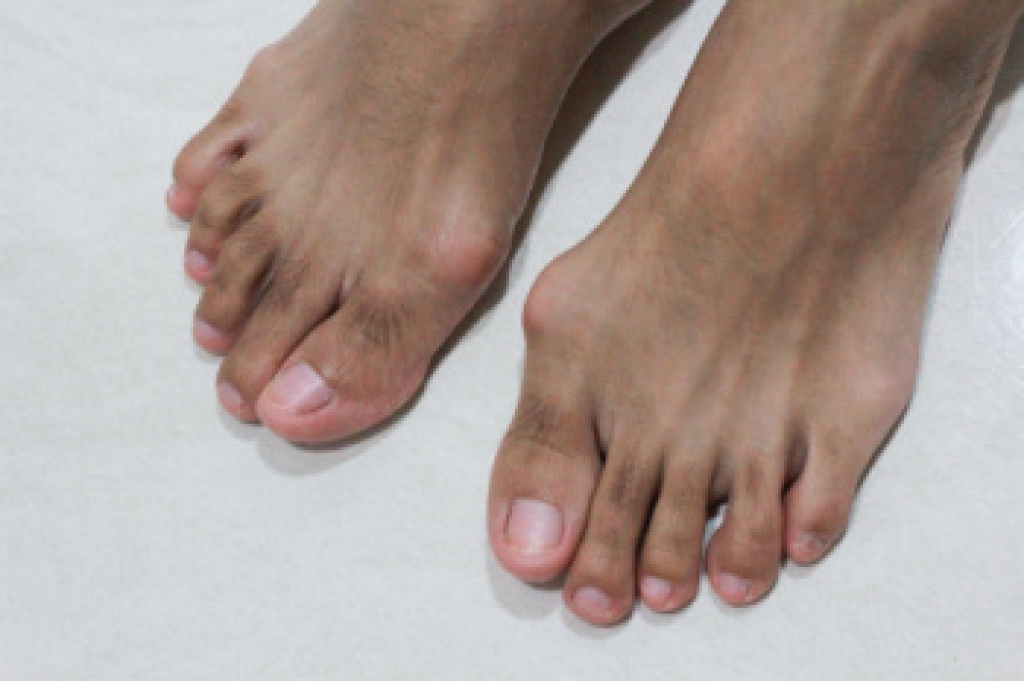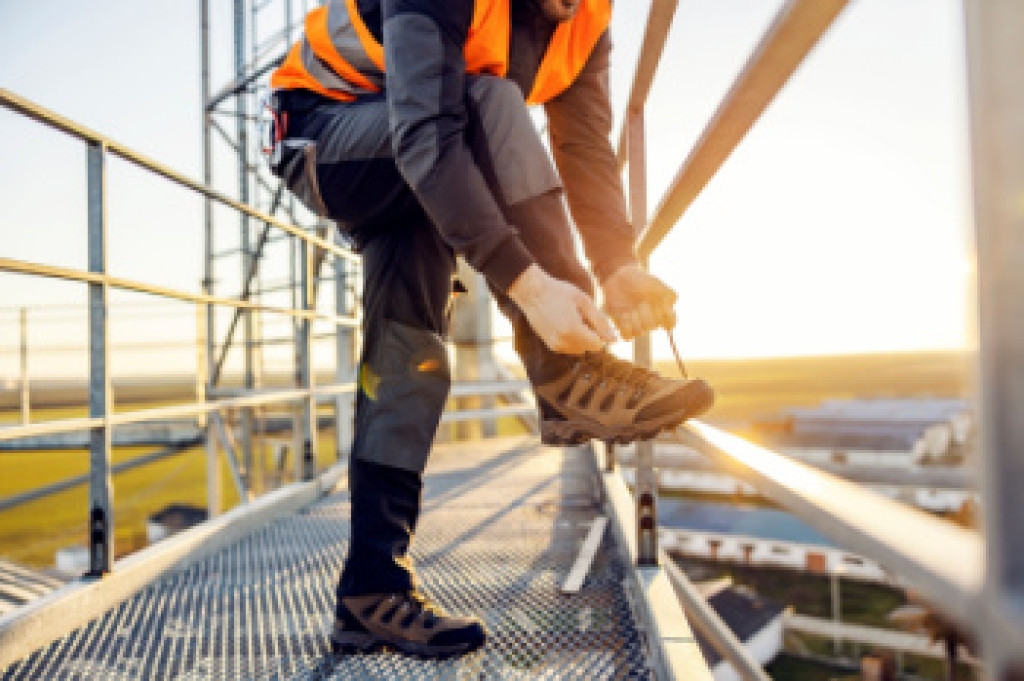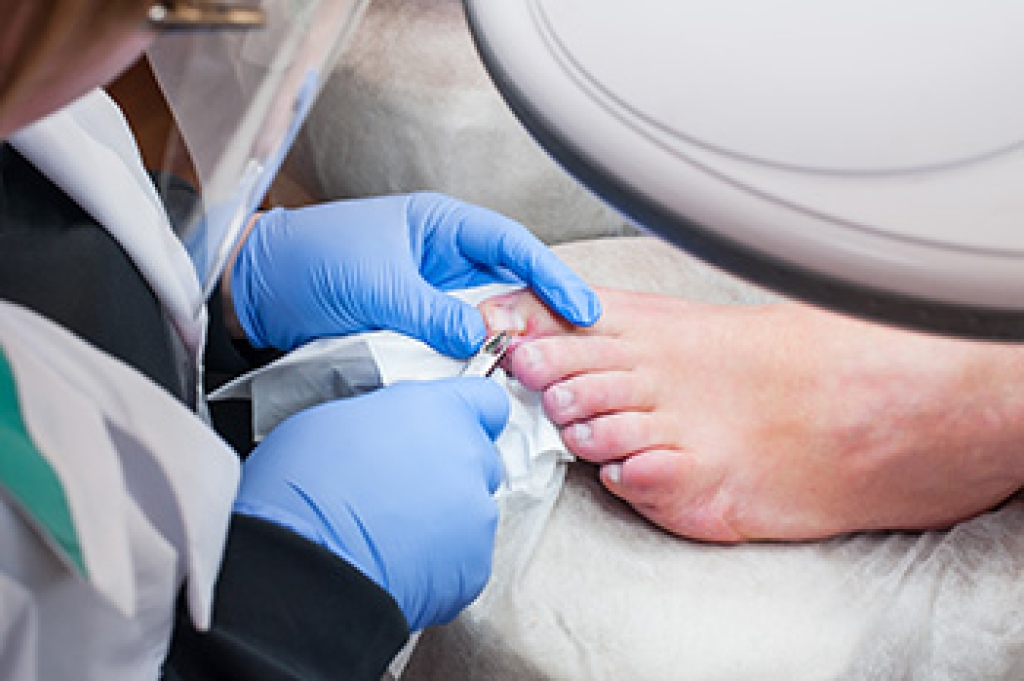Blog
Reasons for Having Bunion Surgery

A bunion can lead to steady pain at the base of the big toe, especially when the bump grows larger as the toe shifts toward the second toe. When wider shoes or protective pads no longer reduce discomfort, surgery to correct the deformity may be considered. Reasons for choosing bunion surgery include pain that interferes with daily movement, difficulty walking more than short distances, or swelling around the big toe joint that does not improve with rest. Some people also struggle to bend or straighten the toe because the joint becomes too stiff. Surgery helps realign the bones of the big toe and reduce the bony prominence so the foot can function more comfortably. A podiatrist can assess the size and severity of the bunion and recommend the best plan for relief. If you have a painful bunion, it is suggested that you make an appointment with a podiatrist for a diagnosis and treatment.
If you are suffering from bunions, contact Ramin Nadjafi, DPM of Advanced Podiatry Group. Our doctor can provide the care you need to keep you pain-free and on your feet.
What Is a Bunion?
A bunion is formed of swollen tissue or an enlargement of boney growth, usually located at the base joint of the toe that connects to the foot. The swelling occurs due to the bones in the big toe shifting inward, which impacts the other toes of the foot. This causes the area around the base of the big toe to become inflamed and painful.
Why Do Bunions Form?
Genetics – Susceptibility to bunions are often hereditary
Stress on the feet – Poorly fitted and uncomfortable footwear that places stress on feet, such as heels, can worsen existing bunions
How Are Bunions Diagnosed?
Podiatrists often perform two tests – blood tests and x-rays – when trying to diagnose bunions, especially in the early stages of development. Blood tests help determine if the foot pain is being caused by something else, such as arthritis, while x-rays provide a clear picture of your bone structure to your provider.
How Are Bunions Treated?
- Refrain from wearing heels or similar shoes that cause discomfort
- Select wider shoes that can provide more comfort and reduce pain
- Anti-inflammatory and pain management drugs
- Orthotics or foot inserts
- Surgery
If you have any questions, please feel free to contact our office located in Orlando, FL . We offer the newest diagnostic and treatment technologies for all your foot care needs.
Finding the Right Shoes for Construction Workers

Choosing the right footwear is essential for construction workers who spend long hours on demanding surfaces. Safety toe shoes offer strong protection from falling objects, while metatarsal guard shoes add an extra layer that shields the top of the foot from heavy impact. Waterproof shoes help keep feet dry in wet environments and slip resistant shoes provide better traction on slick or uneven ground. Additionally, high cut shoes support the ankles and reduce the risk of sprains on unstable job sites. A podiatrist can guide workers in selecting footwear that fits properly, prevents pain, and supports long term foot health. If you have sustained a foot or ankle injury, it is suggested that you consult a podiatrist for expert advice and personalized care.
While working on the feet, it is important to take the proper care of them. For more information about working on your feet, contact Ramin Nadjafi, DPM from Advanced Podiatry Group. Our doctor will treat your foot and ankle needs.
Working on Your Feet
Standing on your feet for long periods of time can cause stress and pain in your feet. Your whole body may experience change in terms of posture, back pain, bunions, callouses and or plantar warts. There are ways to avoid these conditions with proper foot care, smart choices and correct posture.
Positive Changes
Negative heeled shoe – Choosing this shoe type places the heel slightly lower than the ball of the foot. These are great for overall foot health. Find shoes that fit you correctly.
Go barefoot – Our feet were not designed to be enclosed for all hours of the day. Try to periodically expose your feet to air.
Eliminate Pain
Foot Exercises – Performing simple exercises, incorporating yoga and doing stretches are beneficial. This will allow increased blood flow to the area and muscles of the foot.
Achilles tendon – Stretching the foot out flat on the floor will relax the calf muscles and tendon. These exercises can be performed almost anywhere. Make sure you add these exercises to your daily regimen.
With a little bit of this information and knowing more about foot health, you will notice changes. Foot stretches and proper footwear will help with pain and prevent further issues.
If you have any questions please contact our office located in Orlando, FL . We offer the newest diagnostic and treatment technologies for all your foot and ankle needs.
Procedures to Remove an Ingrown Toenail

An ingrown toenail develops when the edge of the nail grows into the surrounding skin, often leading to pain, redness, and infection. When the problem becomes persistent or severe, a podiatrist can perform a minor procedure to remove part or all of the ingrown toenail. The procedure is typically done under local anesthesia to keep the area numb. Depending on the severity, a podiatrist may perform either a partial or a total nail removal. A partial removal, called a wedge excision, is designed to eliminate the part causing irritation, where a total removal affects the entire nail. In some cases, a podiatrist may apply a chemical or use heat to prevent the problematic part of the nail from regrowing. After surgery, proper wound care and footwear that allows adequate toe space are important to help healing and prevent recurrence. If you have a problematic ingrown toenail, it is suggested that you make an appointment with a podiatrist for a diagnosis and treatment.
Ingrown toenails may initially present themselves as a minor discomfort, but they may progress into an infection in the skin without proper treatment. For more information about ingrown toenails, contact Ramin Nadjafi, DPM of Advanced Podiatry Group. Our doctor can provide the care you need to keep you pain-free and on your feet.
Ingrown Toenails
Ingrown toenails are caused when the corner or side of a toenail grows into the soft flesh surrounding it. They often result in redness, swelling, pain, and in some cases, infection. This condition typically affects the big toe and may recur if it is not treated properly.
Causes
- Improper toenail trimming
- Genetics
- Improper shoe fitting
- Injury from pedicures or nail picking
- Abnormal gait
- Poor hygiene
You are more likely to develop an ingrown toenail if you are obese, have diabetes, arthritis, or have any fungal infection in your nails. Additionally, people who have foot or toe deformities are at a higher risk of developing an ingrown toenail.
Symptoms
Some symptoms of ingrown toenails are redness, swelling, and pain. In rare cases, there may be a yellowish drainage coming from the nail.
Treatment
Ignoring an ingrown toenail can have serious complications. Infections of the nail border can progress to a deeper soft-tissue infection, which can then turn into a bone infection. You should always speak with your podiatrist if you suspect you have an ingrown toenail, especially if you have diabetes or poor circulation.
If you have any questions, please feel free to contact our office located in Orlando, FL . We offer the newest diagnostic and treatment technologies for all your foot care needs.
Caring for Your Feet With Diabetes

Diabetes is a chronic condition that affects how the body regulates blood sugar, potentially leading to complications throughout the body, including the feet. High blood sugar can damage nerves and blood vessels, increasing the risk of infections, ulcers, and poor healing. Common diabetic foot complications include numbness, tingling, swelling, open sores, and infections that may go unnoticed without careful attention. Proper foot care is essential to prevent serious problems. Wash and dry your feet daily, keep toenails trimmed straight across, and regularly inspect your feet for cuts, blisters, or sores. A podiatrist can provide professional evaluation, treat existing issues, recommend protective footwear, and create a personalized foot care plan. If you have diabetes, it is suggested that you are under the care of a podiatrist who can help you manage this serious condition.
Diabetic foot care is important in preventing foot ailments such as ulcers. If you are suffering from diabetes or have any other concerns about your feet, contact Ramin Nadjafi, DPM from Advanced Podiatry Group. Our doctor can provide the care you need to keep you pain-free and on your feet.
Diabetic Foot Care
Diabetes affects millions of people every year. The condition can damage blood vessels in many parts of the body, especially the feet. Because of this, taking care of your feet is essential if you have diabetes, and having a podiatrist help monitor your foot health is highly recommended.
The Importance of Caring for Your Feet
- Routinely inspect your feet for bruises or sores.
- Wear socks that fit your feet comfortably.
- Wear comfortable shoes that provide adequate support.
Patients with diabetes should have their doctor monitor their blood levels, as blood sugar levels play such a huge role in diabetic care. Monitoring these levels on a regular basis is highly advised.
It is always best to inform your healthcare professional of any concerns you may have regarding your feet, especially for diabetic patients. Early treatment and routine foot examinations are keys to maintaining proper health, especially because severe complications can arise if proper treatment is not applied.
If you have any questions, please feel free to contact our office located in Orlando, FL . We offer the newest diagnostic and treatment technologies for all your foot care needs.

